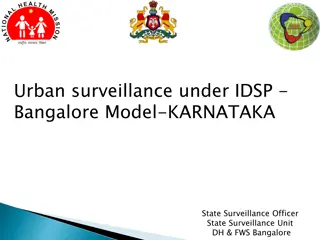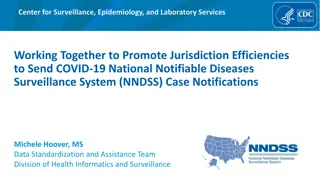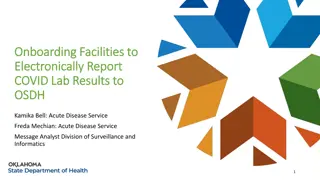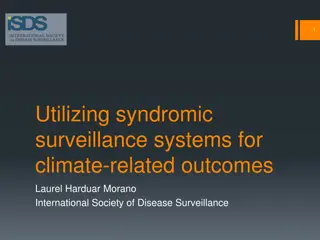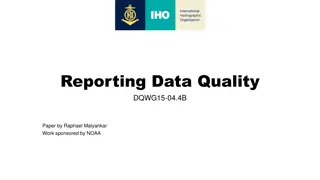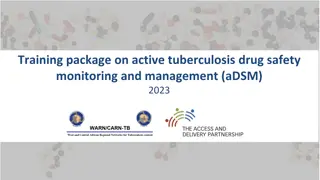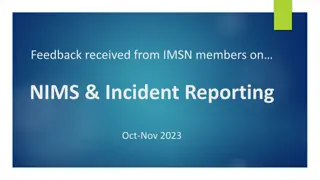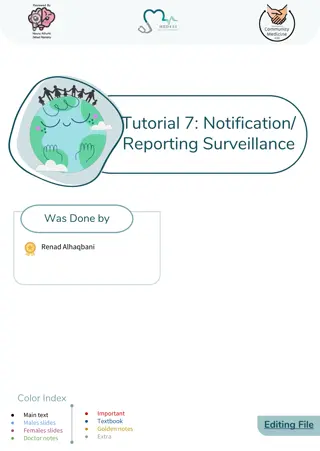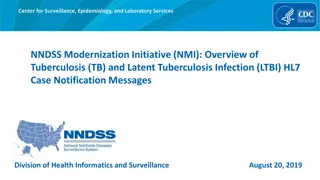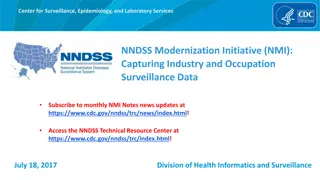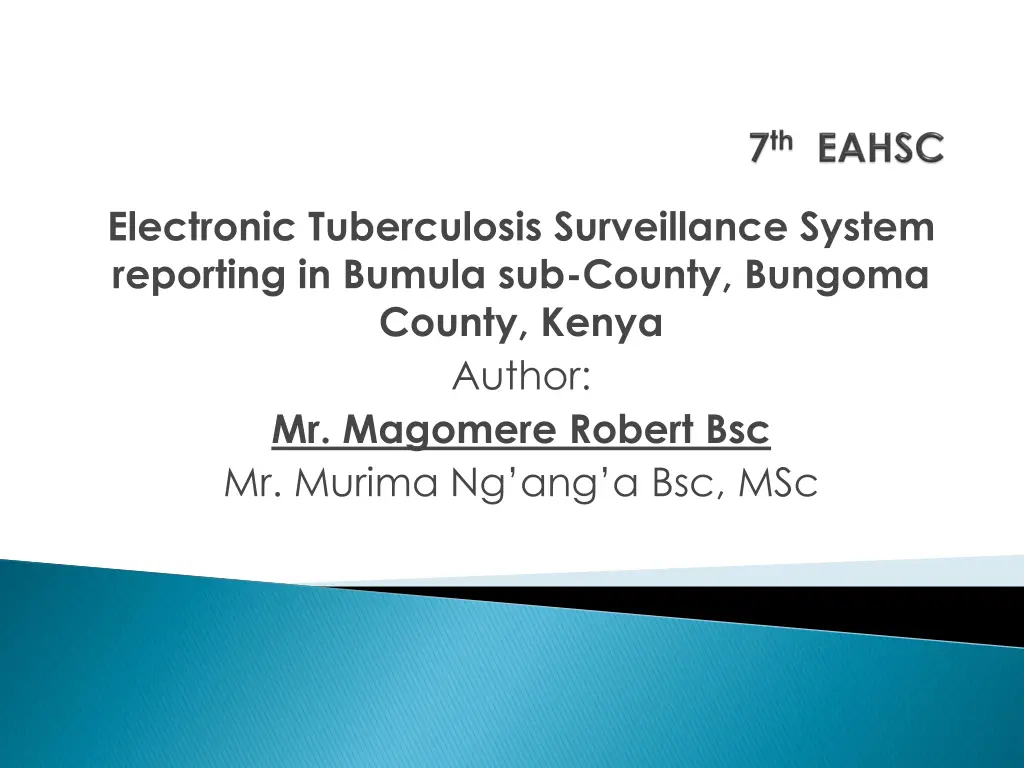
Electronic Tuberculosis Surveillance System in Bumula Sub-County, Kenya
"Explore the implementation of an electronic tuberculosis surveillance system in Bumula Sub-County, Kenya, enhancing data quality and patient care. Learn about the transition from paper-based to electronic systems, benefits, and outcomes of the technology. Discover the importance of monitoring and evaluation in TB control programs."
Download Presentation

Please find below an Image/Link to download the presentation.
The content on the website is provided AS IS for your information and personal use only. It may not be sold, licensed, or shared on other websites without obtaining consent from the author. If you encounter any issues during the download, it is possible that the publisher has removed the file from their server.
You are allowed to download the files provided on this website for personal or commercial use, subject to the condition that they are used lawfully. All files are the property of their respective owners.
The content on the website is provided AS IS for your information and personal use only. It may not be sold, licensed, or shared on other websites without obtaining consent from the author.
E N D
Presentation Transcript
Electronic Tuberculosis Surveillance System reporting in Bumula sub-County, Bungoma County, Kenya Author: Mr. Magomere Robert Bsc Mr. Murima Ng ang a Bsc, MSc
Introduction Objective Materials & Methods Results Conclusion Recommendation 1. 2. 3. 4. 5. 6. 2 5/8/2025
Tuberculosis (TB) surveillance data are crucial to the effectiveness of TB Control Programs. World Health Organizing (WHO) recommends establishing and maintaining well-developed monitoring and evaluation. Electronic recording and reporting systems can strengthen data quality through: Automated validation checks, Accelerate the availability of data for managers and decision-makers, Facilitate the analysis Kenya underwent the transition from a paper-based recording and reporting system to an electronic system, called Treatment Information from Basic Unit, (TIBU). TIBU is a national case-based surveillance system that stores details on individual patient episodes of TB reported to the national TB program The system is able to capture patient-level data that includes demographic characteristics of the patients, type of TB, laboratory results and treatment outcome data. 3 5/8/2025
Kenya is the first country in East Africa to implement a national case-based electronic surveillance system for TB. The system has several merits including: Ease in computing cohort analysis Reduced time of reporting, no loss of data documents Minimizing errors in calculations. Materials used in training healthcare workers and patients on care are incorporated in the system Patients failing to attend clinics are reminded through the system. In addition, Patients who are supported by the programme to attend clinics receive funds directly through their phones (Mpesa system). The devices are also used to transmit scanned copies of documents and pictures. There is need for an advanced information technology infrastructure There is also the need of good data quality 4 5/8/2025
we conducted a review of data captured by TIBU by analyzing concordance between source documents at TB facilities and TIBU Completeness of data from TB register to TIBU was measured. 5 5/8/2025
All the 10 facilities in Bumula were visited All cases recorded in TB facility registers in the year 2017 and 2018 were reviewed. Data for these cases in TB facility registers and corresponding TB patient cards were assessed for concordance with data in TIBU. Calculation of concordance accounted for data recorded in one source and not recorded in another. Completeness for key data items were calculated using proportions. 6 5/8/2025
A total 320 cases reviewed from TB facility registers. Only 224 (70%) cases had a corresponding TB patient card, A total 316 (99%) were present in TIBU. Over 316 (99%) of cases had complete fields for treatment start date, age, sex, type of TB patient, site of disease, and initial sputum smear result in TIBU. However, a high percentage of cases had blank values for HIV test date 149(47%). The concordance between the registers and TIBU was better than that between TB patient cards and TIBU 7 5/8/2025
Use of the electronic system has drastically reduced dependency on several paper-based tools Data in TB facility registers had higher concordance with TIBU than TB treatment cards, This may be due to errors in transcription from treatment cards to the facility register that are corrected on entry into TIBU. The system is fitted with an intelligent dashboard that assists the user in analysing data. The national programme has been enabled to collect timely and accurate data The system has been linked to the Laboratory Management Information System (LIMS) to create a seamless flow of data and link laboratory results to patient-level data. The system has been linked to the Ministry of Health District Health Information System (DHIS2) so as to inform policy-makers through dashboards and summary reports on performance of the programme at any time. Policy-makers are able to make informed decisions in the control of TB. 8 5/8/2025
Electronic recording and reporting systems can greatly improve the efficiency of data collection, aggregation, and analysis for TB programs. Incompleteness and concordance of data may hinder informed decision- making. There is need of regular data quality check. We recommend continuous training and support of TB personnel involved with TB care, management and surveillance on TB data recording Implementation of a quality assurance mechanism to improve data quality. Continuous training of TB surveillance staff on proper data collection and entry 9 5/8/2025
Asante 10 5/8/2025


